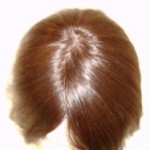Women & hair covering – Ask the Rabbi
Q. I hear that sheitels made of hair from India are now on the banned list. Why, and why do orthodox women cover their hair at all?
 A. Covering the hair is part of the pattern of modesty called in the Mishnah dat y’hudit, “the Jewish rule”.
A. Covering the hair is part of the pattern of modesty called in the Mishnah dat y’hudit, “the Jewish rule”.
The first hint of it comes in B’midbar, “And the priest shall uncover (or ‘unbraid’) her hair” – a reference to the disgrace caused by a suspected adulteress (Num. 5:18).
Rashi says that from this verse the sages deduced that a married woman should not appear in public bareheaded.
The Talmud reports (Yoma 47a) that a woman called Kimchit claimed that because “the rafters of my house never saw my braids” she was rewarded by seeing all her sons as high priests.
However, there were leading orthodox communities such as Lithuania, Rumania and Morocco where women did not cover their hair.
It is well known that the wife of Rabbi JB Soloveitchik did not cover her hair, presumably because of her Lithuanian origins.
Some authorities (including the 19th century Sephardi scholar, the Ben Ish Chai) did not insist that women cover their hair “in a society where modest women generally do not”.
In today’s orthodox world, hair covering by women is taken very seriously, though there are different ways of carrying it out – the wig (pe’ah nochrit or sheitel), the hat, the headscarf and the snood.
Some wigs are made from synthetic hair, but others are from human hair, and this is where a problem has recently arisen. It appears that some such wigs use hair from India and some form of idolatry is involved in the hair-cutting ceremony.



